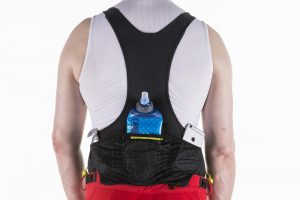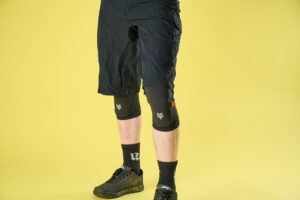Ducati’s Powerstage RR is a full-power e-enduro bike that’s designed to conquer timed climbs. But does it have the raw power to take the race to its rivals? MBR’s bike test editor Muldoon takes it for a quick blast round the Dolomites to find out.
Ducati Powerstage RR first ride review
I have an admission to make. I don’t follow motorsports; never have done. But when someone says Ducati, I instantly think ‘red’ or ‘yellow’, quickly followed by ‘916’ or ‘Monster’. That’s the power of branding right there.
E-MTBs? Well, until very recently they were the furthest thing from my mind when I thought of Ducati. They are clearly front of mind for the Italian brand though. And much in the same way that Yamaha, KTM, Fantic and GasGas are all making inroads into the e-mtb market, Ducati has teamed up with Thok, an Italian e-bike brand, to deliver a limited run of Ducati Powerstage RR e-bikes. Just how well does it stack up against the best electric mountain bikes though?

The Ducati Powerstage RR is a stunning looking machine. Get in quick if you fancy one
And by limited, that means there will be 230 bikes brought to market. Which sounds like a lot, right? Until you realise that Ducati has 821 dealerships worldwide, and sold 60,000 motorcycles in 2022. Big numbers then, so I felt pretty special getting the chance to ride Powerstage RR number 000/230 at a launch in Italy.
So what exactly is the Ducati Powerstage RR? It’s a full power Shimano EP801 e-bike with a carbon frame, 180/170mm travel combined with MX wheels and Ohlins suspension. On the face of it, it’s clearly a boutique enduro e-bike.
Need to know
- Full carbon enduro e-bike with 180/170mm travel that’s focused on climbing
- Thok/Ducati collaboration with only 230 bikes being released
- Shimano EP801 motor and 630Wh removable battery
- MX Crankbrothers carbon wheels come shod with 2.6in Pirelli tyres
- Ohlins suspension and Braking First brakes give a custom build feel
- Non T-Type SRAM GX AXS 12-speed transmission
- Bikes available through Ducati’s extensive dealer network
And with racing at the highest level woven into the fabric of Ducati’s DNA, it should come as no surprise that the Powerstage RR is named after the timed uphill section of the E-EDR, or the e-bike Enduro World Cup which was previously called EWS-E.

Bike test editor Alan Muldoon has a taste of this new Ducati at the press launch in the Dolomites
And the power stages of the E-EDR aren’t just where the races are or won or lost, they pretty much define the attitude of this bike. Shimano’s 630Wh removable battery helps keep the weight down, ideal for climbing and handling, and racers can easily swap out the battery multiple times during a race. For regular riders the smaller battery will be a drawback though, as it limits the range you get on a single charge. It also limits the type of rides you can do, even if you have a second battery.
Then there’s the 361mm BB height, which raises more than an eyebrow. It also elevates the single heaviest component part of the bike, you, the rider. And the reason why it’s so high should now be obvious, it helps keep the cranks of the Shimano EP801 motor spinning at all times, especially on steep techy climbs. Because, if you stall out on a Powerstage for an E-EDR, you may as well pack up and go home.

A steep 78° seat tube and 450mm chainstay length emphasises the climbing focus
Now, if you follow the E-EDR, you’ll already know that until recently there’s been a race within the race, and it’s to be the highest placed rider on a Shimano motor. Put simply, the Shimano motor isn’t as powerful as those produced by Bosch, Specialized, Rocky Mountain and now SRAM, and doesn’t have much overrun to help get you up over big rocky steps either.
I say “recently”, because Ryan Gilchrist, riding an EP801 equipped Yeti 160E, won both Powerstages at the E-EDR at Loudenvielle. Clearly Shimano has some modifications up its sleeve, but until it releases these updates to the public, the Ducati Powerstage RR will struggle to live up to its name.

Braking First 2-piston brakes are a rare sight but standard equipment on this e-MTB
And it’s not just the BB height that’s pushing boundaries. The Ducati Powerstage RR has a 78º seat angle to help keep rider weight forward on the steepest climbs. It’s interesting too that the Powerstage RR does not use the smaller 27.5in rear wheel to make the chainstay length as short as humanly possible. Instead, it has opted for 450mm chainstays across all three frame sizes, which just reinforces its uphill bias.
But the longer rear end is something of a double-edged sword. Sure, it helps keep the front end loaded on flatter turns and on crazy steep climbs, but it also makes it harder to lift the front wheel or get your weight back on steep, sketchy descents. Which is why I wished that someone had not cut the fork steerer so short, just to make the bike look good for photos, as I’d really have liked to try the bike with a high handlebar position, just to see if shifting my weight further back offered a better overall balance.

British brand Renthal supplies the 800mm bar which is paired with a 45mm Ducati stem
The frame has also been designed for maximum stiffness, with the full carbon construction and oversized 1.8in tapered head tube. Factor in the carbon Renthal handlebar and Crankbrothers Synthesis Carbon Enduro wheels, and it’s pretty clear that the Powerstage RR is built to be ridden with precision and aggression. Not always the easiest thing to do when riding long stages that you don’t know like the back of your hand.
How it rides
Which is quite fitting, as I only had one afternoon on the Ducati Powerstage RR and it was on trails that I didn’t know particularly well. Also I spent a fair chunk of that time tweaking the Ohlins suspension in search of decent baseline setup. I went quite a bit firmer than Ohlins recommendations on the RXF38 Air fork, as it felt too divey compared to the more supportive TPS (Thok Progressive System) 4-bar rear suspension.

It’s Ohlins on suspension duties for the fork and rear shock.
With the help from Ducati’s tech support I settled on a 525lb spring for the Ohlins TTX22m.2 shock. The sag seemed spot on, but even with the rebound damping almost fully closed, the bike tended to buck too readily for my liking. How much of this was due to the pronounced difference in suspension response front to rear is hard to say, but at 80kg I’m not a super heavy rider, so I’d argue that the shock tune on the Ducati is skewed towards the fast end of the rebound curve.

Yellow coil spring, glossy red paintwork and a custom rear fender. This Ducati looks the part
I’d also argue that riding bike park trails isn’t really representative of enduro racing. And when I got the Ducati on more awkward, natural trails, the bike made more sense. In the thick of it, I was instantly struck by how much extra grip I had between the soles of my shoes and my flat pedals, even though they are the same shoes and pedals that I’ve been riding for months. So even when the back end of the bike was dancing around wildly, my feet were securely planted on the pedals.
With tougher casing Pirelli tyres I made full use of the higher volume 2.6in casings to run lower pressures, enhancing traction and reducing the amount of deflection. Still, I was surprised by how stiff the bike felt, especially when trying to navigate wet, slimy roots and rocks. You need to be strong on the Ducati just to stay on line, the overall stiffness rewarding a firm hand and punishing lazy riding and poor line choices. Again, I’m not sure if this it’s the best approach when you’re second guessing where to go in a race run.

The high volume 2.6in Pirelli Scorpion tyres are the e-MTB model
Without swapping the Crankbrothers Synthesis Carbon wheels for an alloy wheelset, it’s hard for me to tell with any confidence if the frame is the source of the stiffness, or if it’s compounded the component parts. So that’s something I’d like to try if I can get the bike for an in depth test.
What I can say with certainty though is that the BB height didn’t feel as tall as expected when actually riding the bike. Sure I had to hunker down a little more on the descents and the saddle felt like it was under my armpit at full height when I stood next to the bike, but the overall riding position felt remarkably neutral. The benefits of the short seat tube and low top tube clearly apparent when you need to get both feet down in a hurry if you or the EP801 motor run out of steam on a climb.

The Powerstage RR has a usefully low standover height and a short tube
Verdict
So the Ducati Powerstage RR is a razor sharp ride, where the geometry and attitude are geared towards climbing. Point it down anything steep and the Ducati feels fast and precise, even if a little edgy. But that could be due to the carbon wheels and me not having enough time to get the Ohlins suspension set up just so. I also noticed my quads burning more than normal on the descents, which is my go-to indication that I’m hunkering down more to counter the elevated BB height. Yes, the higher BB is probably a boon for techy climbs, but if Ducati is serious about winning a power stage, it really needs Shimano to unlock the underlying potential of the Shimano EP801 motor, and pronto.
















